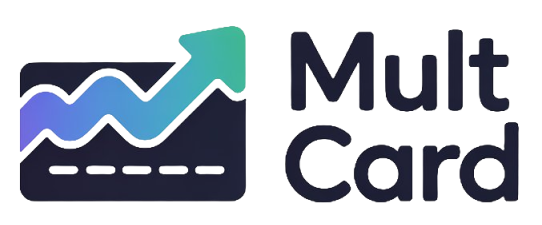In the digital age, securing a loan can feel as easy as ordering takeout. A few clicks, some personal information, and promises of quick cash can appear in your bank account almost instantly. This convenience, however, often masks the complexity of the commitment you’re about to make.
The most critical step in this process isn’t the application; it’s the moment before you check the “I agree” box. That digital document—the loan agreement—is a legally binding contract. This guide will demystify the fine print, empowering you to navigate your online loan agreement with clarity and confidence before you sign.
Why You Can’t Afford to Skim Your Loan Contract
It’s tempting to scroll straight to the bottom of any terms and conditions page, but your loan agreement deserves your full attention. This document isn’t just a formality; it’s the rulebook for your debt. It outlines your rights, your obligations, and, most importantly, the lender’s rights if you fail to meet those obligations.
Hidden within the technical jargon are clauses that can dramatically increase the cost of your loan. Unexpected fees, penalties for early repayment, or aggressive collection practices can turn a manageable loan into a significant financial burden. In the world of online lending, that simple checkbox is the modern equivalent of a handwritten signature, and it carries the same legal weight. Treating it lightly is a risk you simply cannot afford to take.
Decoding the Key Components of Your Loan Agreement
A loan agreement can seem intimidating, but it’s typically broken down into several standard sections. By knowing what to look for, you can systematically analyze the contract and understand exactly what you’re agreeing to. Focus your attention on these critical components.
The Principal, Interest Rate, and APR
These three figures form the financial core of your loan. It is essential to understand the distinction between them to grasp the true cost of borrowing money. The Principal is the straightforward part—it’s the initial amount of money you are borrowing from the lender.
The Interest Rate is the percentage the lender charges you for borrowing the principal. However, the most crucial number to find and understand is the Annual Percentage Rate (APR). The APR gives you a more complete picture because it includes not only the interest rate but also most of the fees associated with the loan, expressed as an annualized percentage. It is the most accurate measure of the total cost of your credit.
- Principal: The base amount of your loan before any interest or fees are added.
- Interest Rate: The lender’s fee for the loan, expressed as a percentage of the principal.
- APR: The total annual cost, including interest and mandatory fees. Always compare loans using the APR, not just the interest rate.
Loan Term and Repayment Schedule
This section details the timeline of your loan. The “loan term” is the total length of time you have to repay the entire loan, often expressed in months or years. A shorter term typically means higher monthly payments but less interest paid overall. A longer term will lower your monthly payments but result in you paying significantly more in total interest over the life of the loan.
The repayment schedule will specify the amount of each payment, the due date for each month, and how the payments will be applied (i.e., how much goes toward interest versus the principal). Scrutinize this to ensure the monthly payment amount fits comfortably within your budget without straining your finances.
Fees and Penalties: The Hidden Costs
This is where many borrowers get into trouble. Fees can be tucked away in the contract and can substantially inflate the cost of your loan. Look for any mention of charges beyond the principal and interest. Being aware of these potential costs is vital.
Here is a breakdown of common fees you might encounter:
| Fee Type | What It Is | How to Spot It in the Contract |
|---|---|---|
| Origination Fee | A one-time charge for processing and underwriting the loan. It’s often deducted from the principal before you receive the funds. | Look for terms like “loan processing fee,” “administrative fee,” or “underwriting fee.” |
| Late Payment Fee | A penalty assessed if your payment is not received by the due date. It can be a flat fee or a percentage of the overdue amount. | Find the section on “late charges,” “delinquency,” or “default.” |
| Prepayment Penalty | A fee charged if you pay off your loan earlier than the agreed-upon term. Not all loans have this, but it’s crucial to check. | Search for “prepayment clause” or “early repayment fee.” |
| Insufficient Funds (NSF) Fee | A charge if an automatic payment from your bank account is rejected due to a lack of funds. Your bank may also charge you a separate fee. | Often listed as “NSF fee,” “returned payment fee,” or “bounced check fee.” |
Red Flags to Watch for in an Online Loan Document
Beyond understanding the standard terms, you must also be on the lookout for signs of a predatory or problematic loan. A reputable lender will provide a clear and transparent contract. If you notice any of the following red flags, proceed with extreme caution or walk away entirely.
Vague Language and Blank Spaces
Your loan agreement should be specific. Terms like “fees may apply” without detailing what those fees are should be a major concern. Furthermore, never, ever sign a contract that has blank spaces. A dishonest lender could fill in those blanks with unfavorable terms after you’ve already signed.
High-Pressure Tactics
Be wary of any lender that rushes you to sign. Phrases like “this offer expires in one hour” or pressure from a representative to commit immediately are tactics designed to prevent you from carefully reviewing the terms. A legitimate loan offer will still be there tomorrow, giving you ample time for due diligence.
Unclear or Complex Fee Structures
If you’ve read the section on fees multiple times and still can’t figure out exactly when and how much you’ll be charged, that’s a deliberate lack of transparency. The fee structure should be straightforward. If it feels like you need a finance degree to understand it, the lender may be intentionally trying to confuse you about the loan’s true cost.
Automatic Renewals or “Rollovers”
This is particularly common with high-interest, short-term loans like payday loans. A rollover clause might automatically extend your loan and add more fees and interest if it’s not paid in full by the due date. This can trap borrowers in a dangerous cycle of debt, where they are paying fees just to keep the loan afloat without ever touching the principal.
Your Pre-Signature Checklist: A Step-by-Step Guide
Before you commit, run through this final checklist. It’s your last line of defense to ensure you’re making a sound financial decision.
- Verify the Lender’s Legitimacy: Do a quick search for the lender’s name. Look for online reviews, a physical address, and legitimate contact information. Check with consumer protection agencies to see if any complaints have been filed against them.
- Read Every Single Line: It can’t be stressed enough. Take your time, even if it’s long. Use your device’s “find” feature (Ctrl+F or Command+F) to search for keywords like “fee,” “penalty,” “interest,” and “default.”
- Do the Math Yourself: Don’t just trust the numbers provided. Use an online loan calculator to multiply your monthly payment by the number of months in the term. This will show you the total amount you will have repaid by the end, allowing you to see the full cost of interest.
- Understand the “Right to Cancel”: Some loans may have a “cooling-off” period, which gives you a short window (e.g., 24-48 hours) to cancel the loan without penalty. Know if your agreement includes this option and what the exact procedure is to do so.
- Ask Questions: If any part of the agreement is unclear, do not sign. Contact the lender’s customer service department and ask for a clear, written explanation. A reputable lender will be happy to provide clarification.
- Save a Copy: Before you sign, download and save a PDF of the blank agreement. After you sign, immediately save the final, executed copy for your records. Do not rely on the lender to keep it accessible for you on their website.
What Happens After You Sign?
Once you’ve signed the agreement, the process moves forward. The funds will typically be disbursed to your bank account within the timeframe specified in the contract. From there, your responsibility is to make your payments on time as outlined in the repayment schedule.
Keep your saved copy of the loan agreement in a safe place. It is your reference point for the entire duration of the loan. If any disputes or questions arise about payments, fees, or payoffs, this document will be your single source of truth.
Conclusion: Sign with Confidence
An online loan can be a powerful financial tool when used responsibly, but that responsibility begins with being a fully informed borrower. The loan agreement is not an obstacle; it’s a roadmap that details the journey you and the lender will take together. By taking the time to read, question, and understand it, you shift the power back into your hands.
Don’t let the convenience of a quick application lull you into a costly mistake. Invest the time upfront to protect your financial future. When you finally click “agree,” you’ll be doing so not with a sense of anxiety, but with the well-earned confidence that comes from making a truly educated decision. For more detailed guidance, the Consumer Financial Protection Bureau offers a comprehensive guide to understanding your online loan agreement and comparing offers.




